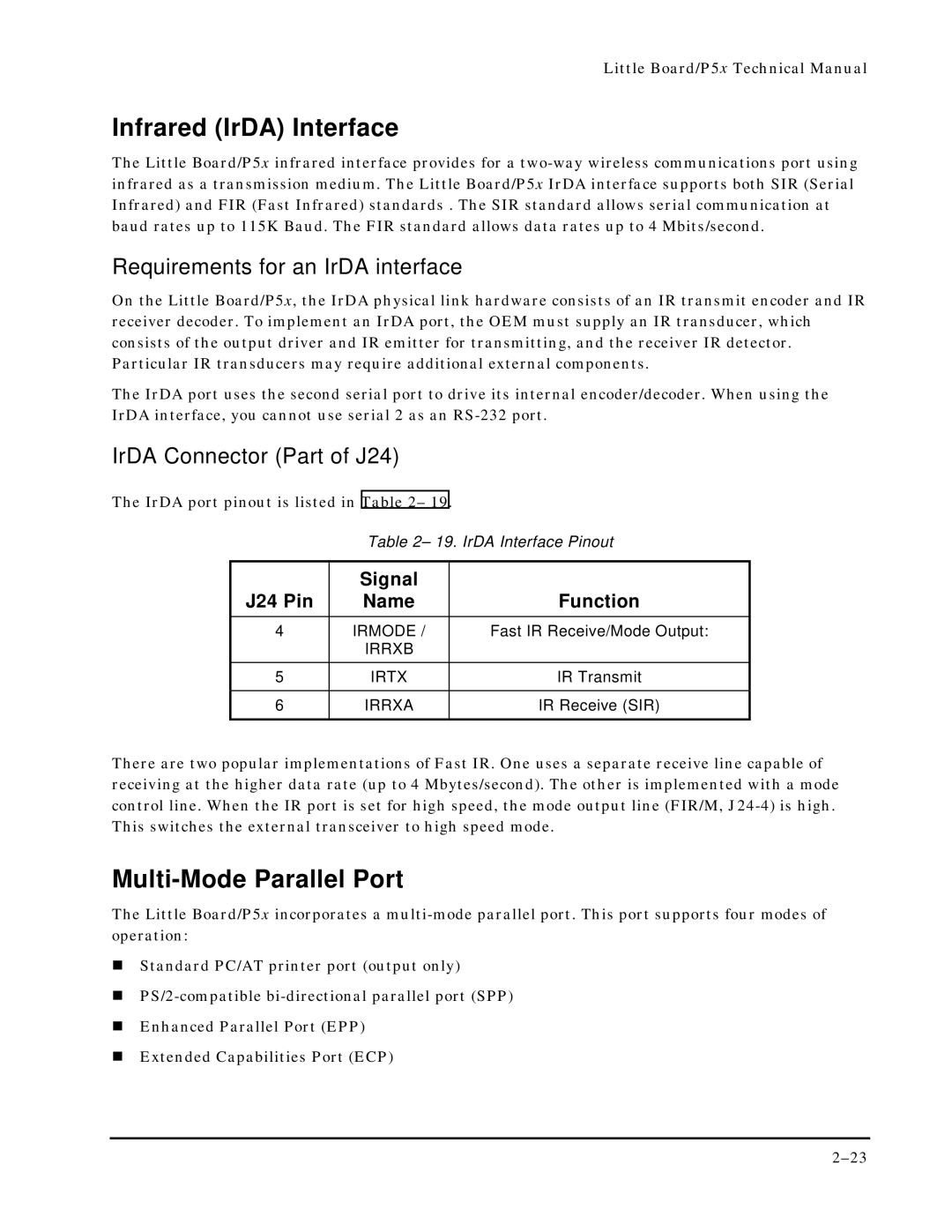Little Board/P5x Technical Manual
Infrared (IrDA) Interface
The Little Board/P5x infrared interface provides for a
Requirements for an IrDA interface
On the Little Board/P5x, the IrDA physical link hardware consists of an IR transmit encoder and IR receiver decoder. To implement an IrDA port, the OEM must supply an IR transducer, which consists of the output driver and IR emitter for transmitting, and the receiver IR detector. Particular IR transducers may require additional external components.
The IrDA port uses the second serial port to drive its internal encoder/decoder. When using the IrDA interface, you cannot use serial 2 as an
IrDA Connector (Part of J24)
The IrDA port pinout is listed in Table 2– 19.
Table 2– 19. IrDA Interface Pinout
| Signal |
|
J24 Pin | Name | Function |
|
|
|
4 | IRMODE / | Fast IR Receive/Mode Output: |
| IRRXB |
|
5 | IRTX | IR Transmit |
|
|
|
6 | IRRXA | IR Receive (SIR) |
|
|
|
There are two popular implementations of Fast IR. One uses a separate receive line capable of receiving at the higher data rate (up to 4 Mbytes/second). The other is implemented with a mode control line. When the IR port is set for high speed, the mode output line (FIR/M,
Multi-Mode Parallel Port
The Little Board/P5x incorporates a
!Standard PC/AT printer port (output only)
!
!Enhanced Parallel Port (EPP)
!Extended Capabilities Port (ECP)
